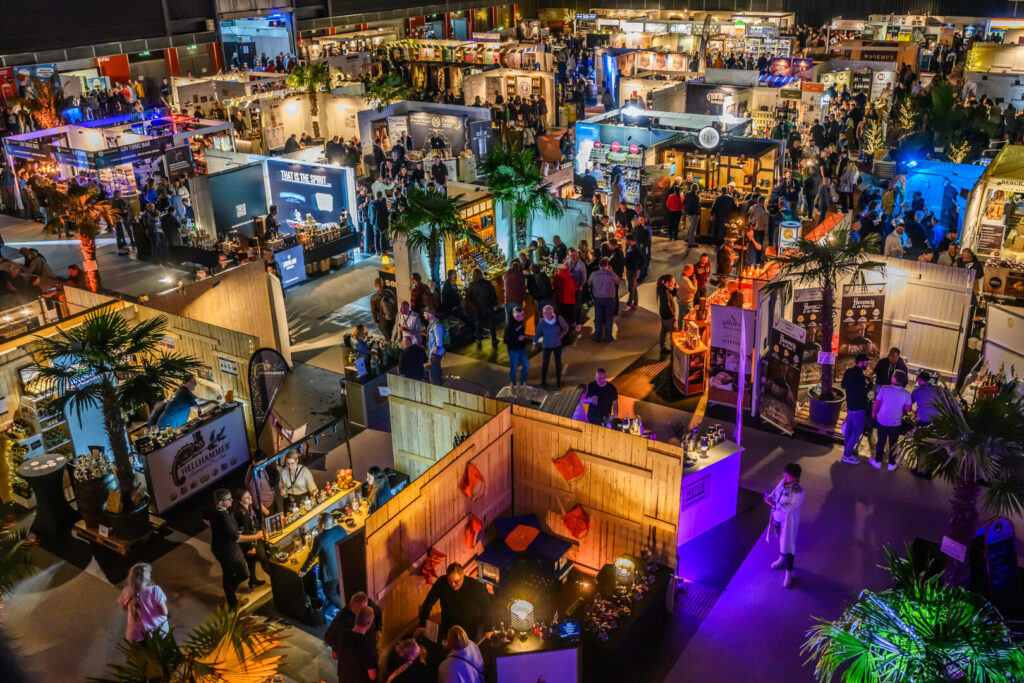
Startseite Spirits
Spirits
Come with us to the island of good taste
Discover the diversity of whisky/whiskey, rum/rhum, gin and other spirits at the BOTTLE MARKET!
Whisky/Whiskey
The BOTTLE MARKET is the largest spirits event in the north-west. Here you will find whiskies from all Scottish production regions as well as Iceland, Sweden, Germany, France, India, Taiwan, Japan, Canada… and, of course, whiskey from Ireland.
Whether you’re a smokehead or prefer a light Irish whiskey, whether you favour classics or want to discover something new, whether you love rye whiskey or bourbon, whether you collect single casks or prefer standards – our exhibitors have just the thing for you!
Maybe you’ll find your new favourite for Christmas with us! Come by, bring your friends and try the products at the stands at self-cost price. You won’t want to miss it!
Whisky/Whiskey facts
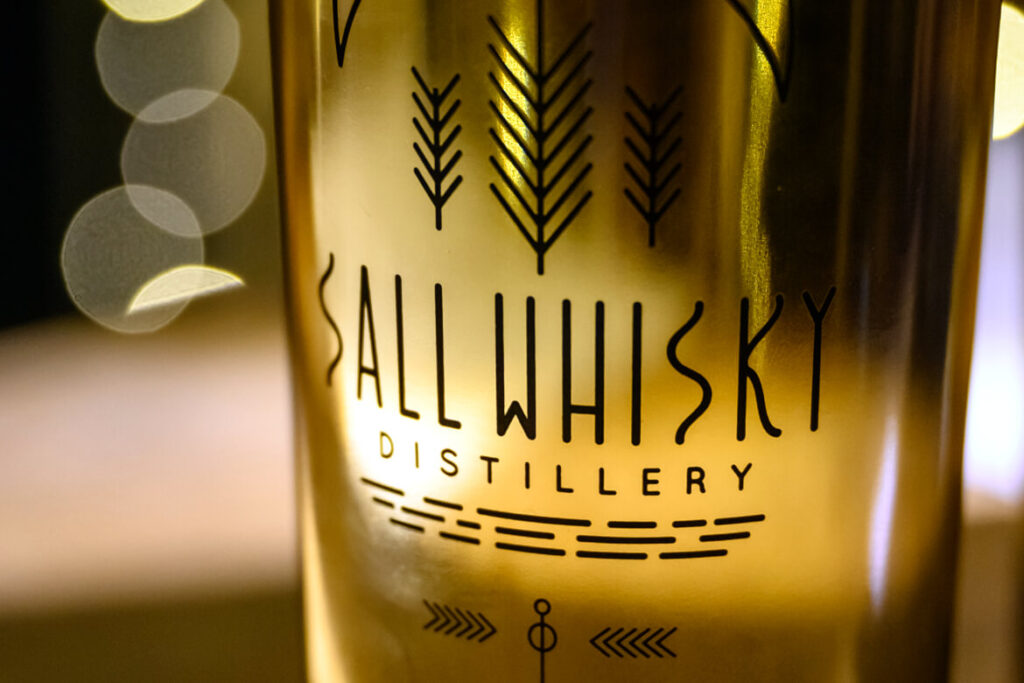
What is whisky/whiskey?
Whisky/Whiskey – also called the water of life – is a spirit whose main ingredients include water, yeast, and various types of grain. Scotch whisky is distinguished from its namesakes, Irish whiskey and bourbon whiskey.
How is whisky/whiskey made?
Whisky/whiskey is produced by distilling fermented grain mash two or three times. For whiskey from America, the resulting alcohol must then be aged in a wooden barrel for at least two years; all other whiskeys are aged for at least three years.
In most countries where whiskey/whisky is produced, oak wood is required for storage.
Alcohol content
The alcohol content of whisky/whiskey is at least 40.0% by volume.
Terms
The designation simply distinguishes between Scottish whisky without an ‘e’ and Irish and American whiskey with an ‘ey’. Nowadays, whiskey no longer comes only from these three countries, but is produced all over the world. Depending on which tradition the producer sees themselves in, they also designate their whisky/whiskey accordingly. The small difference in spelling is therefore more than just a stylistic device.
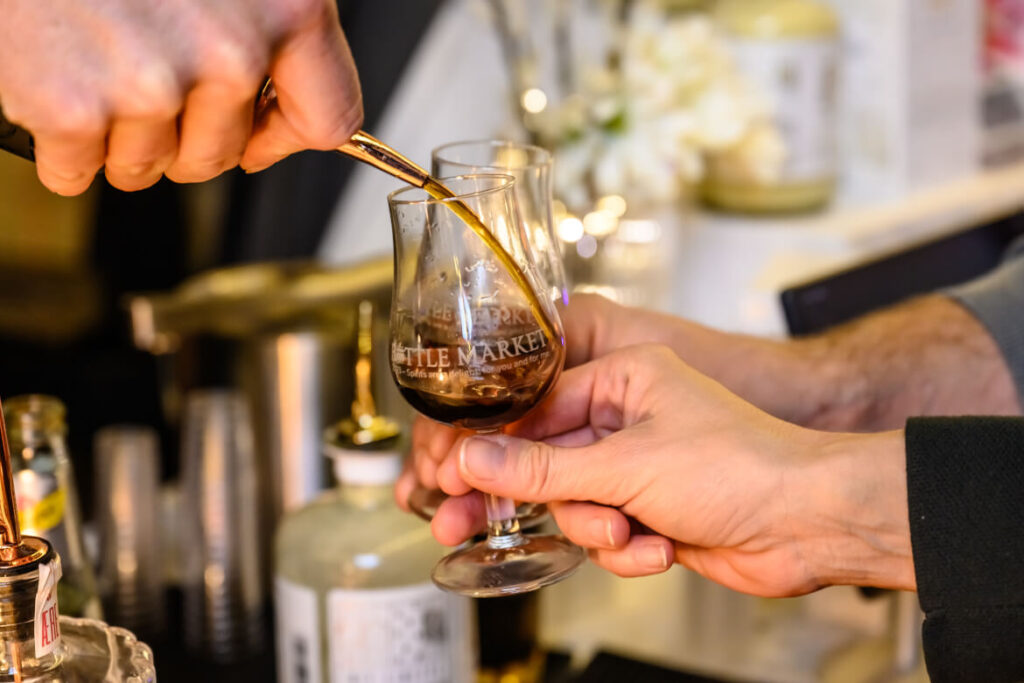
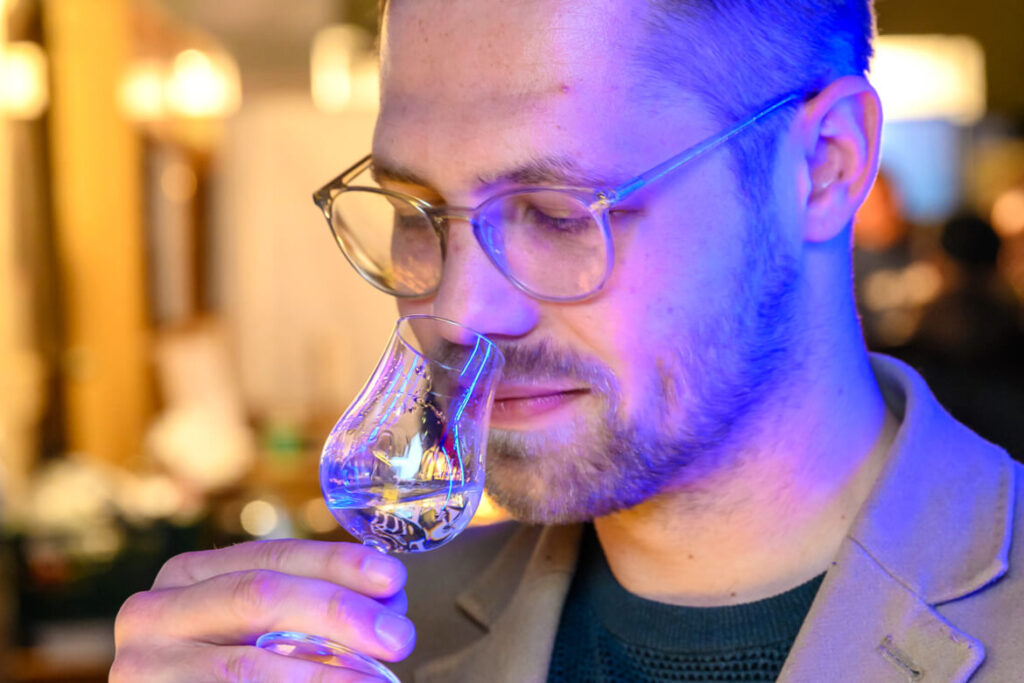
Taste the spirit
Get your day and group tickets for the BOTTLE MARKET 2025 now.
Rum/Rhum
In the 18th century, the Danish West India Fleet traded extensively with the trading town of Flensburg. Since then, rum/rhum has been enjoyed (not only) by northern Germans – in their tea, in cola and as a cocktail!
You can discover just how diverse and exciting good sugar cane schnapps is when enjoyed neat at our exhibitors’ stands. Whether rum, rhum or ron – discover the exotic world of sugar cane and taste products from all the well-known and lesser-known producing countries. Whether rum/rhum based on sugar cane juice or molasses – join us on a delightful journey around the world and find a new favourite for the cosy season.
You also have the opportunity to take part in tastings and learn more about the different varieties, the production process and the countries of origin.
Rhum/Rhum facts
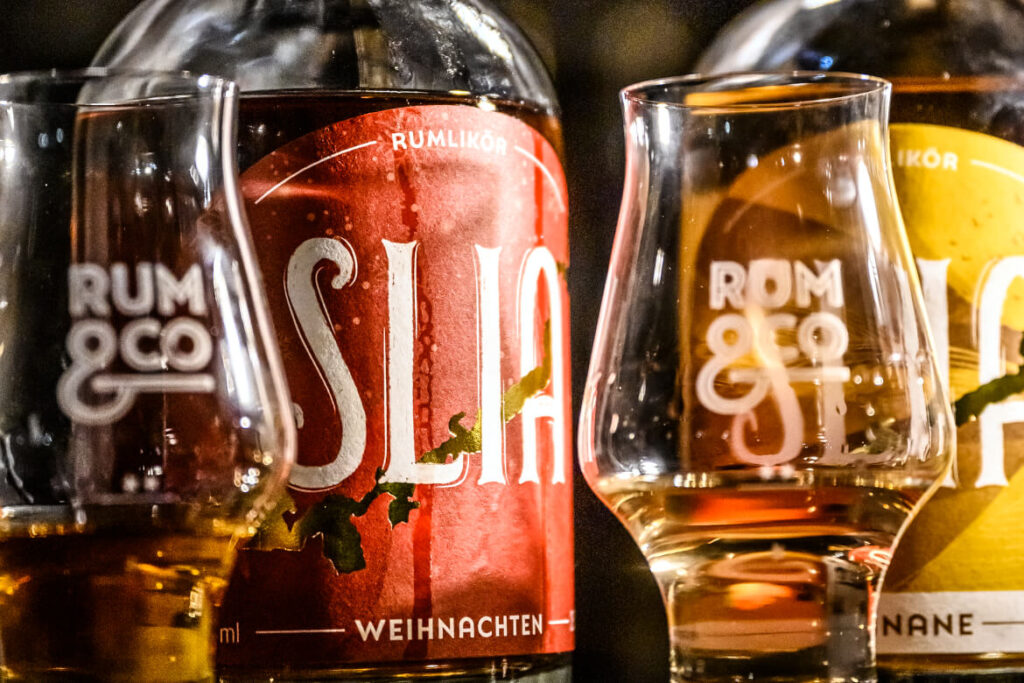
What is rum/rhum?
Rum/rhum is a spirit that, unlike whiskey/whisky and gin, is not based on grain or a fruit/berry. Instead, they rely on sugar cane juice or, correspondingly, sugar cane molasses, i.e., chopped and boiled sugar cane. This is the raw material without which rum production would be unthinkable.
Categories
Rhum/Rhum can be divided into different main and subcategories. Some, for example, distinguish between dark/brown rum (called dark rum or aged rum) and white rum (white or blanco). Others are not based on color, but on the exact raw material: molasses rum and sugar cane juice rum.
Alcohol content
The alcohol content of rum/rhum is at least 37.5% by volume. Of course, there are also rums/rhum with significantly higher alcohol content.
Production
During production there are various fascinating steps to consider that demonstrate that rum is a high-quality spirit: harvesting and extraction, fermentation, distillation, storage, and aging.
Terms
There are three different varieties: Rum/Rhum originates from the geographical area of the British overseas islands in the Caribbean or the south-east of the Indian Ocean.
Ron is the name given to a rum/rhum made from sugar molasses, produced in the Spanish Antilles.
Rhum comes from the French Antilles (now mainly Martinique, Guadeloupe and La Réunion) and often bears the addition Agricole.
Gin
Around 25 producers and importers await you at the BOTTLE MARKET to present juniper schnapps from twelve countries. In total, you can discover well over 100 varieties. Whether London Dry, New Western Style, Sloe or Barrel Aged – we have the right gin for every taste!
Learn about the special characteristics of individual gin brands. Try a gin with different tonics. Rosemary, pepper or, for a classic combination, cucumber? Discover which garnish best complements the delicate flavours of your new favourite.
Gin facts
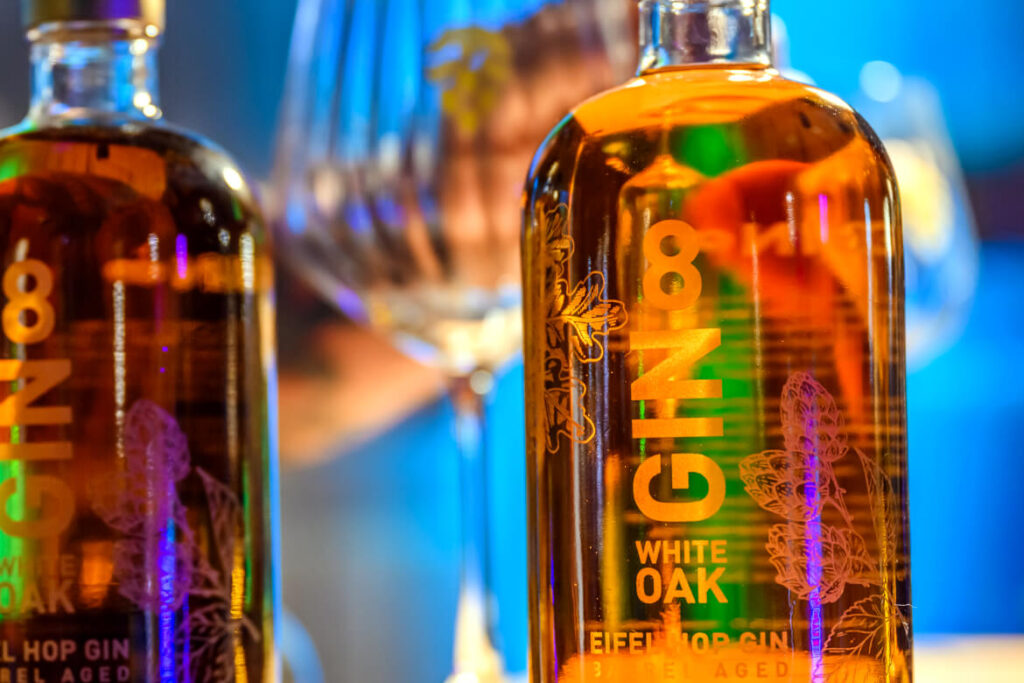
What is gin?
Gin is a spirit produced by flavouring ethyl alcohol of agricultural origin with juniper berries (Juniperus communis L.).
Ethyl alcohol is a neutral alcohol with no recognisable taste of its own, usually made from grain, with an alcohol content of at least 96% by volume, which is produced by a natural fermentation process and is not artificially synthesised.
Alcohol content
The alcohol content of gin is at least 37.5% by volume.
Flavours
In the production only flavourings and flavouring extracts may be used that give a predominant taste of juniper.
Terms
The term gin may be supplemented by the term dry if the content of added sweetening products does not exceed 0.1 g/L of the finished product. So much for the official language.
There are actually only three: London Gin, Distilled Gin and Sloe Gin. These do not refer to the flavour, but to the production process. All other varieties are either historical or have become established. They are unofficial, which is why a wide range of information can be found on the internet, in newspapers and magazines.